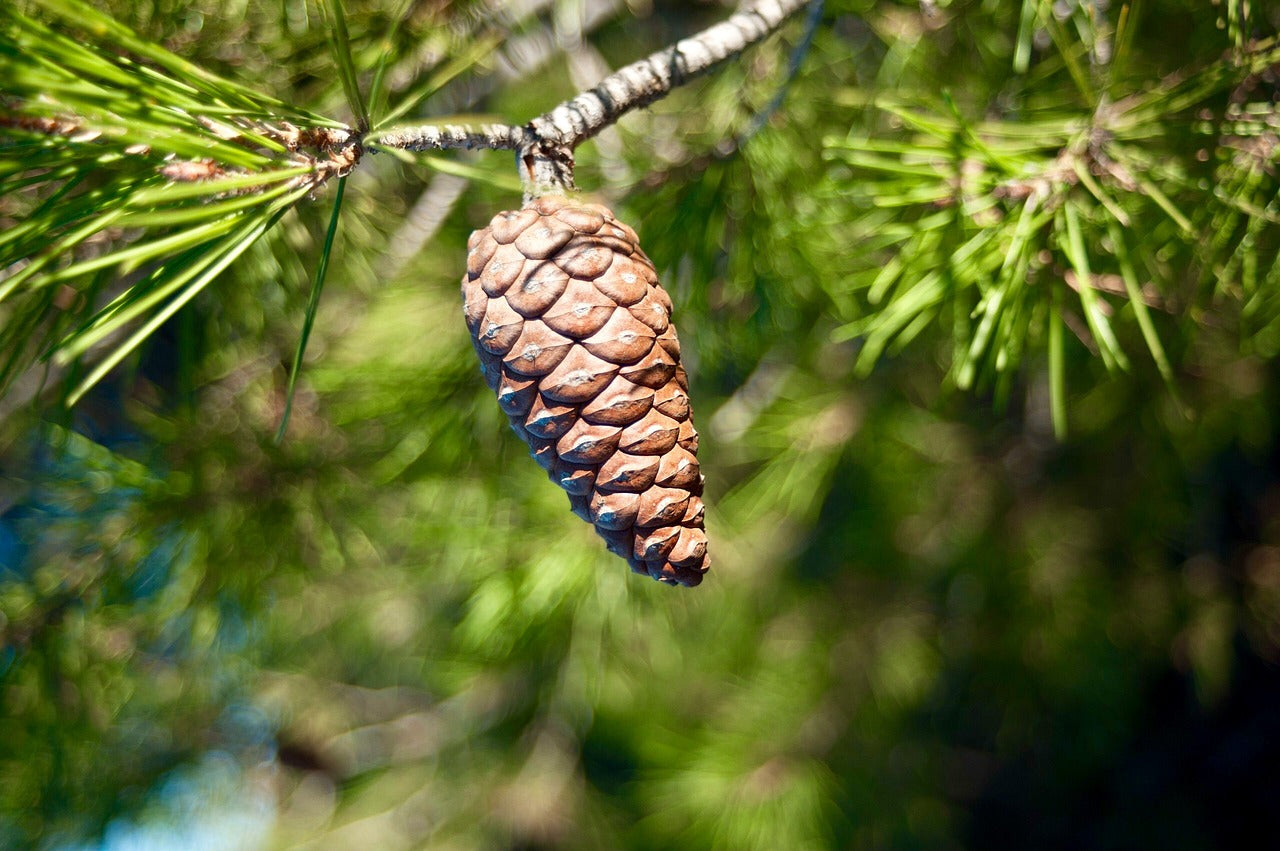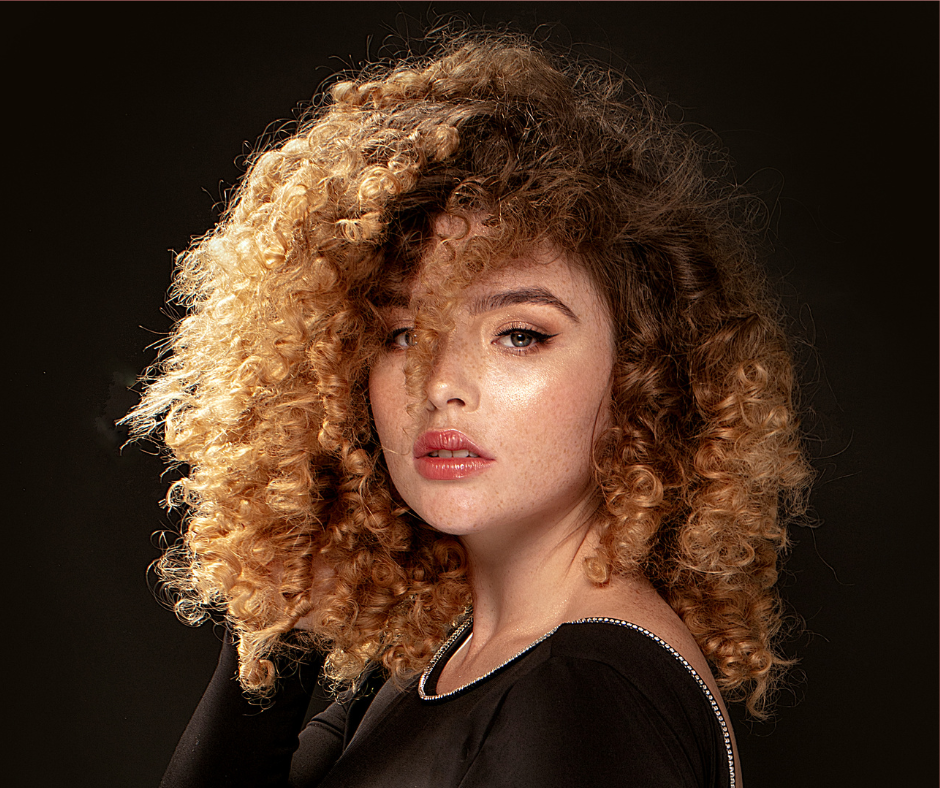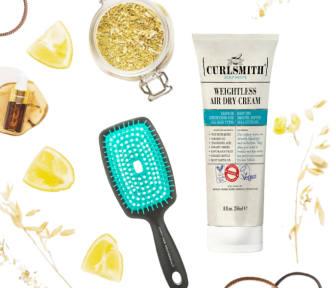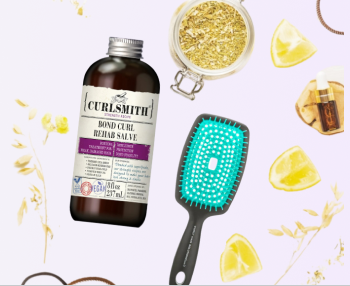First let’s start with an over-simplified explanation of porosity….
In your mind picture a pinecone. The ones laying on the ground with wide open scales would be high porosity, the ones on the tree that are turning brown and not fully open would be normal porosity, and the ones near the top that are still tightly closed would be low porosity.

Low porosity hair as a pine cone.
The thing to remember is that our hair is very often a mixture of porosities as it tends to be lower porosity towards the scalp and normal or high porosity towards the ends of the hair. Hair that has been coloured or relaxed chemically will tend to be higher porosity.
Another way you can tell your porosity is how long your hair takes to get wet. So if you can imagine the pinecone again, low porosity green scales are pointing down… well it will take some time to get that water into the hair shaft. But let me add that really thick curly hair will take a long time to get wet too and it might not be low porosity, so this test alone isn't necessarily the best indicator of porosity.
Your products might not be absorbing well into your lower porosity hair. Let's remember that it is not a bad thing to be in the in the lower to normal porosity range and may actually mean that your hair is easier to style. Your hair is not repeatedly swelling with water and then losing it - this tends to cause damage and create the dryness (or frizziness) that we work to manage.
So how can you help your low porosity hair get the most out of your routine?
1. Know that your hair is healthy. It doesn’t need a lot of work and product.... but it does need gentle handling.
2. Moisture means water. You will want to choose products where water is the first ingredient.
3. You will also need humectants that are film-forming like plant gels, panthenol, hydroxyethlycellulose or xanthan gum. Common humectants like glycerin and propylene glycol might be too heavy and in certain weather conditions (very humid or super dry) they work against creating that barrier that helps your hair hold its shape and moisture.
4. Hydrolyzed proteins will also help hold the moisture. Although low porosity doesn’t get as much benefit from protein compared to higher porosity hair, the smaller proteins (silk protein, amino acids) are still useful. A product like the Curl Keeper Silk Conditioner contains silk amino acids. Coarser hair can get brittle with too much protein so watch for these signs and stop or change your routine if needed.
5. You still should be able to use oils or oil-containing products for flexible hair as long as you have a base of film-forming humectants in for your first layer. But watch for products where butters and oils are in the top of the ingredients list as these may be too heavy and/or cause buildup.
6. To get a bit more moisture back and keep the flexibility in between full washdays, spray your hair with distilled water and a bit of conditioner in your bottle. Just make a little at time so that the product is used up quickly as once mixed with water the preservatives will not work as effectively. Alternately use a little oil on the areas that feel dry.

7. Look for a conditioning emuslfier ingredient such as behentrimonium methosulfate and cetyl alcohol near the top of the ingredients list in your conditioners. These ingredients help fatty alcohols and oils absorb into your hair to keep your curls feeling soft and manageable. Jessicurl's Deep Conditioning Treatment, for example, contains behentrimonium methosulfate, as do the Jack59 conditioner bars.
8. Last but not least, using HEAT is one of the best things you can do and it is so easy to accomplish. Place a plastic cap over your hair that is already full of conditioner and you can just let your body heat do the work. Or add a nice warm towel out of the dryer on top of the cap to add a touch more warmth. You can also buy a cap that can be heated up in the microwave like the Hot Head Thermal Caps. Using heat will double the amount of conditioner that penetrates and adheres to your hair.
So if you have your film-forming humectants, conditioning ingredients as above, and maybe some oil if needed, your hair should stay soft and hydrated regardless of porosity. In my blog about oils, I mentioned using them as pre- poo. This method can definitely work for lower porosity hair but make sure they are applied with a light touch.
I will end this stating that because lower porosity hair can experience build up easily, it is important to use a good shampoo regularly. If your water is hard get something with disodium EDTA in it to help with removing the minerals that can also weigh down low porosity hair.
References
-
Science-y Hair Blog
(https://science-yhairblog.blogspot.com/2014/07/moisturizing-low-porosity-hair.html)








